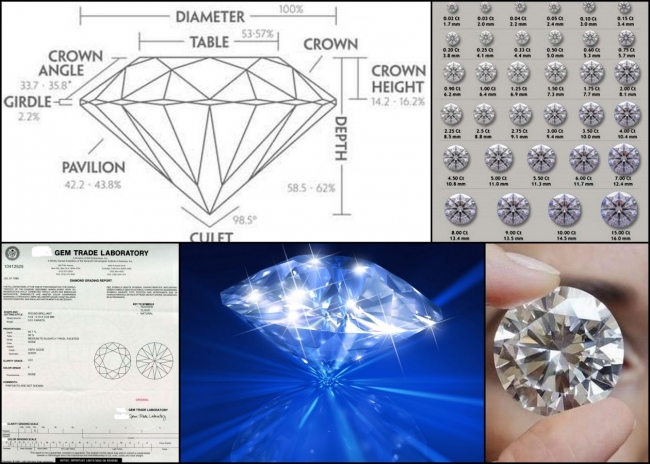
There are many things that have to be attended to with meticulous detail as the wedding date draws close. A wedding ring is one of them. From the host of styles and types of wedding rings that are available, the most popular choice is a diamond ring. Diamonds are the most memorable gift that you can give to the woman in your life especially on her special day. The word diamond is derived from the Greek word adamas which means unconquerable. Diamonds were formed more than 900 million years ago, while some diamonds may be as old as 4 billion years. They are unique stones with special features that can add or detract from their value. It is important to have the basics of diamonds at your fingertips before you go out to buy a diamond ring. Here are five tips to choose a diamond ring for your wedding day.
1. Color
The value of a diamond is determined to a great extent by its color. This is graded on a scale indicated by the letters of the alphabet from D to Z. Diamonds with color grading of D, E, and F are considered colorless or white, while G, H, and I are considered nearly colorless. These are the most valuable. K through Z are not considered white, and have a hint of yellowness to them. The further you go on the scale, the more color the diamond has. You will also find diamonds that have a hint of other colors in them, and these are graded differently. This does not necessarily mean they are less valuable though. Some unusually colored diamonds may command top prices. It is important to remember that all the aspects of a diamond have to be taken into consideration to arrive at the true value of a diamond.
2. Clarity
Clarity refers to the absence of flaws in a diamond. Natural diamonds are not the outcome of a controlled process. As a result they contain what are known as inclusions which are the result of crystallization. These flaws may be very minute or may be large enough to be visible to the naked eye. Clarity is determined after examination of the diamond under tenfold magnification by an expert. Based on this, the diamond will be given a grade of clarity . This grade is indicated by the letters V, S, and I which stand for very, slight, and included. You will hear the terms VVS1 and 2, VS1 and 2, and SI1 and 2. These stand for very very slightly included, very slightly included and slightly included. Each of these are numbered 1 and 2 to indicate different levels of difficulty in viewing the inclusions by the expert under magnification. So a VS1 would be a higher clarity than a VS2. You will also hear I1, I2, and I3, which mean the diamonds are imperfect and the inclusions can be seen by the naked but trained eye. The most valuable grade of diamonds are those that are termed F or IF, which stands for flawless or internally flawless.
3. Carat
Carat can be broadly understood as the unit used to measure the weight of a diamond. One carat is a fifth of a gram or 200 milligram. However, that is just part of the story. As the weight of the diamond goes up, the value of it does not increase correspondingly but in a progressive and exponential manner. This is because as the weight of the diamond goes up, it also becomes more rare to find. As with all the other factor, however, the weight of the diamond can only be used to value the diamond in conjunction with the other factors. A diamond with a low carat value may be costlier than a diamond with a higher carat value due to the cut, the clarity and the color.
4. Cut
The only factor of a diamond that is man made or controlled by man is its cut. Diamonds are harvested in their raw uncut form, and they do not look anything like what we imagine diamonds to be. It is only when they are cut and faceted by experts that they become capable of refracting and reflecting light in the manner we associate with them. Cutting a diamond is a science and an art. A complex set of aesthetic, scientific and commercial factors are used to determine what will be the best cut to apply to a piece of uncut diamond. Most people mistake the shape of a diamond for the cut aspect of it. Cuts have more to do with the depth, the proportions and the facets of the stone in question. Cuts are graded on how well they bring out the refractive and dispersive qualities of the stone. While understanding the various cuts and principles behind them can be difficult, many organizations now classify them as poor, average, excellent and top grade or best cuts.
5. Certification
Most establishments dealing in diamonds will offer you a certificate along with your diamond. This will document the carat, the clarity, the color, and the cut of the diamond along with other aspects like the polish, the depth, the symmetry and the fluorescence of the stone. Make sure you get this authentication certificate from the recognized diamond certification body in your part of the world.


